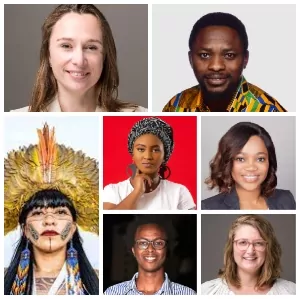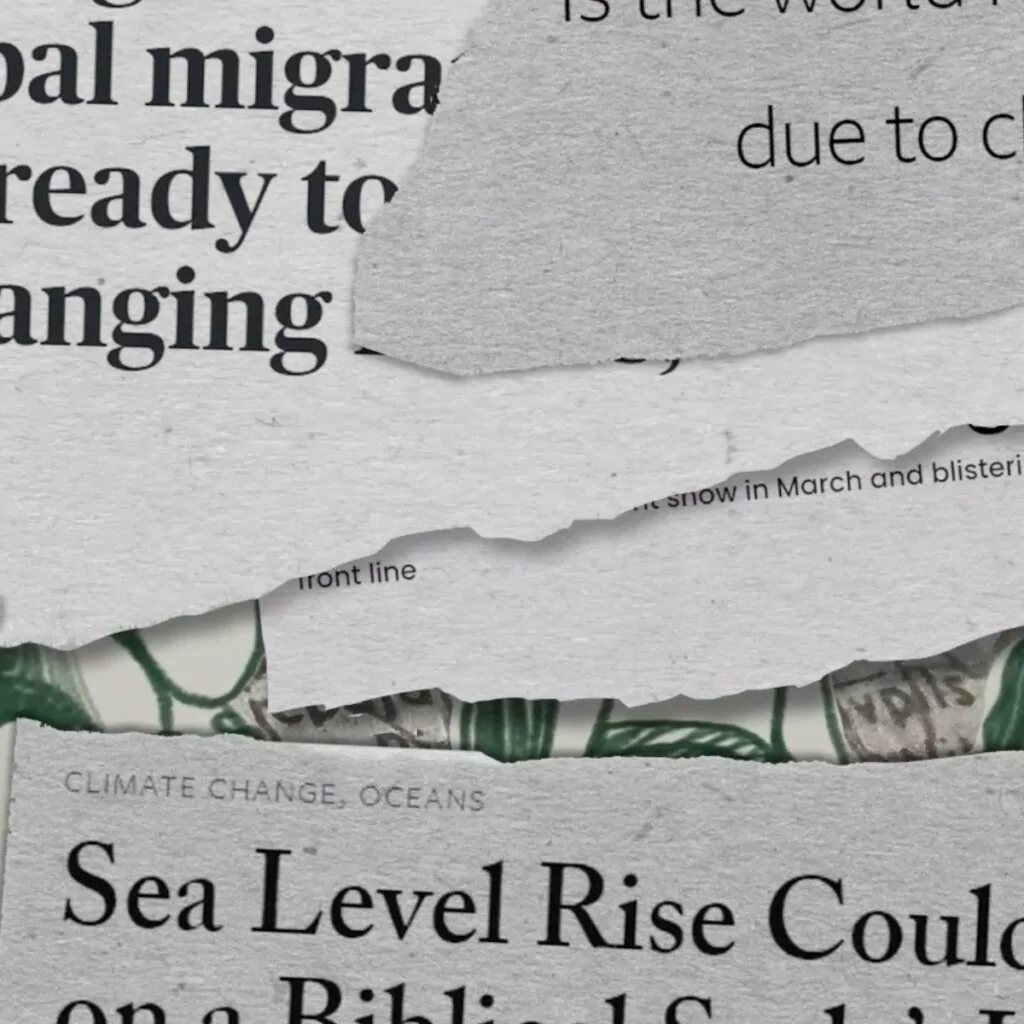What did COP27 mean for climate justice?
We close this year with a short but sharp analysis of what COP27 represented from the perspective of Richard Gorkrun, who lives on the frontline of the climate crisis in Tuvalu. You’ll also find an overview of how different topics around climate justice were addressed during the event.
Good news: you can now read the previous livism editions on our website and share them with your friends: https://livismclimate.org/
Thank you for your support this year, we’ll be bringing you more stories and analysis in the coming year.
Happy reading and see you in 2023!!
Happy Holidays,
The Livism Team
What did COP27 do to address climate justice?
By Richard Gorkrun


© Adam Sébire / Climate Visuals
Richard Gorkrun, Director of the Tuvalu Climate Action Network. Previously, he was a Data and Communication Officer at the Tuvalu Meteorological Service.
For thirty years, Pacific leaders have attended the annual United Nations climate conference (COPs) to call for greater climate action and to advocate for policies that promote and uphold justice.
While climate change affects everyone, for us Pacific Islanders, the stakes are different: unless dramatic action is taken now, our homes will disappear forever.
This year, we packed our bags for the COP once again and headed to Sharm El-Sheikh, Egypt, in the hopes that our voices might finally be heard. One of our biggest priorities for this conference was to push for the creation of a loss and damage fund that would provide financial assistance to countries in the Global South most affected by the climate crisis.
This fund is critical. Countries like Tuvalu, my island-home, are the least responsible for climate change. Yet we are paying the biggest price. When extreme weather events occur, we are the first ones hit: homes are destroyed, families displaced, primary health care services are affected and, in some cases, lives are lost. When this happens, finance and funding is imperative to get us back on track. Developed countries have long exploited fossil fuels at the expense of people and the planet and they now have a moral responsibility to support countries who are left to deal with the mess.
After years of hard work, and a negotiation process that was the second-longest ever in the history of climate conferences, countries agreed to create a fund, which – if implemented correctly – could be a lifeline for countries like mine living on the frontlines of the crisis.
The deal is undoubtedly a historic win. But it is far from perfect. Most importantly, the deal means little if commitments to limiting global heating to 1.5°C are not upheld. The conference in Egypt this year saw the biggest presence of fossil fuel lobbyists in the history of the summit, and strong pushback to phasing out fossil fuel use by oil producing states.
In addition, the deal does not specify who should control the fund, which countries should pay into it, and how much they should pay. The fund is also voluntary, meaning that high-emitting countries like the United States are not obliged to pay.
At COP27, Global South countries and civil society alike were more unified than we have ever been. Despite the summit taking place in Egypt – a country where the rights to freedom of speech are limited – the COP nevertheless saw conversations unfolding at the intersection of human rights, health and climate, as well as a huge presence of youth and Indigenous climate activists.
Historic as it may be, the outcome of this COP is yet another display of rich countries doing nothing to address the cause of the climate crisis. The loss and damage fund can help us mop up the problems caused by years of climate inaction. But unless we turn off the source of the mess, we won’t be able to clean it up.
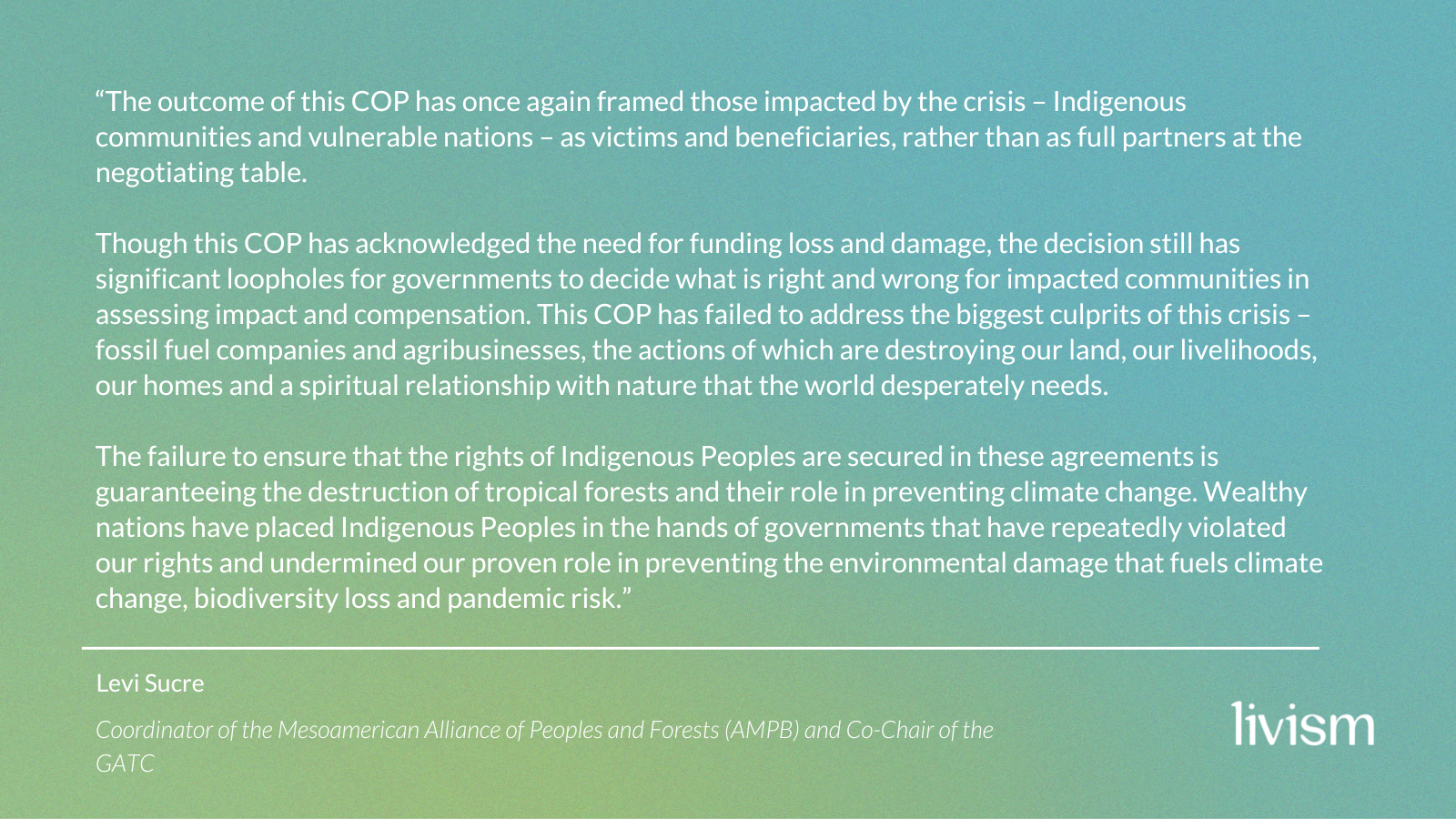

In case you missed it
The African COP
African countries are suffering the impacts of climate change: extreme weather disasters, food insecurity, floods…. Having the 27th Climate Summit on the frontlines was meant to bring hope for these countries. Dialogues and negotiations would be brought closer to actions where these impacts are being felt.
At the end, the results were contrasting: the agreement made between the 196 countries that decided to create, within a year, a loss and damage fund to financially assist developing countries is seen as historical, therefore, less of a charitable gesture than the repayment of a “climate debt”.
Furthermore, among successes and failures, COP27 didn’t significantly advance the global battle against climate change, owing to a lack of agreement on fossil fuels. As Damien Glez wrote: “while it is important to evaluate how particular nations have adapted to the harm they have endured, would it not be more beneficial to address the causes of the plague at the source of the damage?”
Gender equality
When the UNFCCC secretariat launched the annual Gender Day at the COP in 2012, the links between gender inequity and climate change were not well understood by the climate community. But, ten years later, gender is on the agenda – in a big way.
At COP27, the United States President Joe Biden launched the Climate Gender Equity Fund to advance women-led climate solutions. Forty-one grassroots women’s organisations from Asia, Africa and Latin America launched a new advocacy network working to scale up direct climate finance for Indigenous, Afro-descendant and local community women and girls. And Gender Day was felt throughout the conference, with women of all backgrounds fighting for the recognition of gender equity as a climate solution.
Yet for all that has changed, much has stayed the same. A new report by the Women’s Earth and Climate Action Network (WECAN) published ahead of the COP found gender is still not integrated into climate policy. The report finds that G20 countries – who are responsible for almost 80% of global carbon dioxide emissions – lack gender-responsive national climate change policies.
But women are not giving up the fight. “It is high time we empower girls to become the leaders we need,” said environmental and climate activist Elizabeth Wathuti at a speech at COP27. “It is high time we centre the voice of women.”
Health
The health community pushed for governments to assess progress on climate action by easing what matters most – people’s health. We saw several events take place at the WHO health pavilion that called for countries to adhere and adopt the WHO guidelines on air pollution. This speech on the effect of air pollution on children by Indian lung surgeon Dr Arvind Kumar was particularly poignant. Another report showed that African governments could save up to 200,000 lives per year by 2030 by acting across five key areas.
COP27 also showcased the experience of countries that have already committed to building climate-resilient and low-carbon health systems – 62 countries have now committed to building climate-resilient & low-carbon health systems, with 20 countries, including the US and UK, setting a date to reach net-zero emissions from health systems before 2050. Health organisations also came out in support of the loss and damage fund but were critical of the lack of agreement on fossil fuel phase out.
“Without a clear commitment to phase out all fossil fuels – not just ‘unabated coal’ – the world will remain on a course for further warming, growth in climate impacts, and increased health consequences for the people everywhere. The imperative to peak emissions by 2025 is entirely absent from COP27’s final text.” – Jess Beagley, Global Climate and Health Alliance policy expert.
Racial justice
Due to the past and ongoing effects of colonialism, racism and economic exploitation, climate change is a major threat, particularly to the Global South and racialised and marginalised communities in the Global North. Before COP27 started, Racial Justice and Climate Organisations released a statement demanding immediate climate action on loss and damage.
Once in Egypt, Indigenous representatives from all over the world cautioned that the climate crisis is a matter of life and death for them: without lands and territories, they would lose not only their livelihoods, but also their cultural and spiritual identity. Indigenous Peoples play a crucial role in maintaining and protecting our forests, but there’s still little concrete support to allow them to keep doing it in a sustainable manner.
In a powerful closing speech, Helena Gualinga from the Kichwa Sarayaku community in Ecuador expressed her vision for the future saying that she envisions “the living forest”. She also explains in this opinion piece why she is sceptical of COP27’s efficacy and the significance of engaging Indigenous people in climate crisis negotiations.
Youth
The youth climate movement was again a powerful collective voice putting pressure on governments at COP27, despite significant restrictions on protests in Egypt. Fridays For Future organised a climate strike inside the venue on both Fridays during the COP, and the Youth Pavilion seemed to be the busiest place in Sharm El-Sheikh for those two weeks.
Young activists, from across the Global South in particular, have been translating civil society calls for loss and damage finance in the last couple of years into messages and stories that make sense to ordinary people outside the climate bubble, while also pushing for a step change in efforts to decarbonise our societies.
The breakthrough on a loss and damage fund at COP27 is monumental, and has been advocated for by frontline communities for decades. But even if important steps have been taken to address the consequences of climate change, COP27 saw backsliding on agreements to phase out fossil fuels. Future generations will face much less secure lives than their parents unless the causes of the crisis are dealt with and the fossil fuel dependency ends.
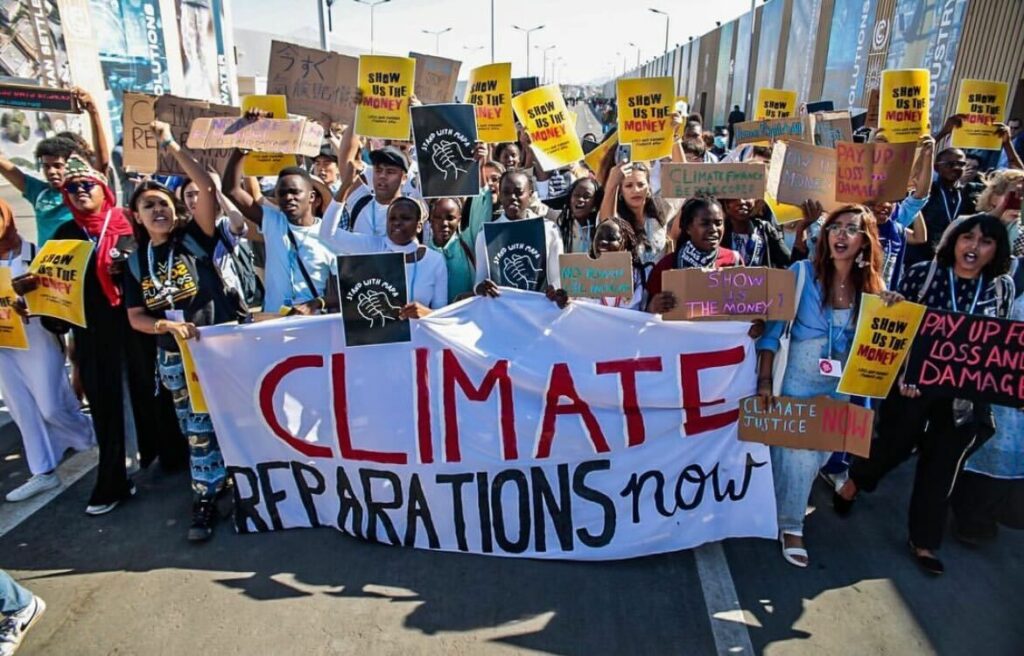

Picture from Mitzi Jonelle’s Instagram account.
Culture
This year culture played a pivotal role in the climate negotiations – both as a way to amplify the messages of grassroots communities and civil society and because, for the first time, the parties to the UN Climate Convention acknowledged the critical linkages between cultural heritage and climate change.
Throughout the two weeks, artists from the Fearless Collective kept frontline voices front and centre with workshops and a mural in the Blue Zone. Painted over a few days the giant mural featured Puyr Tembe, an Indigenous climate organiser from the Amazon, Vanessa Nakate from Uganda, and Pakistani environmentalist Ayisha Siddiqa.
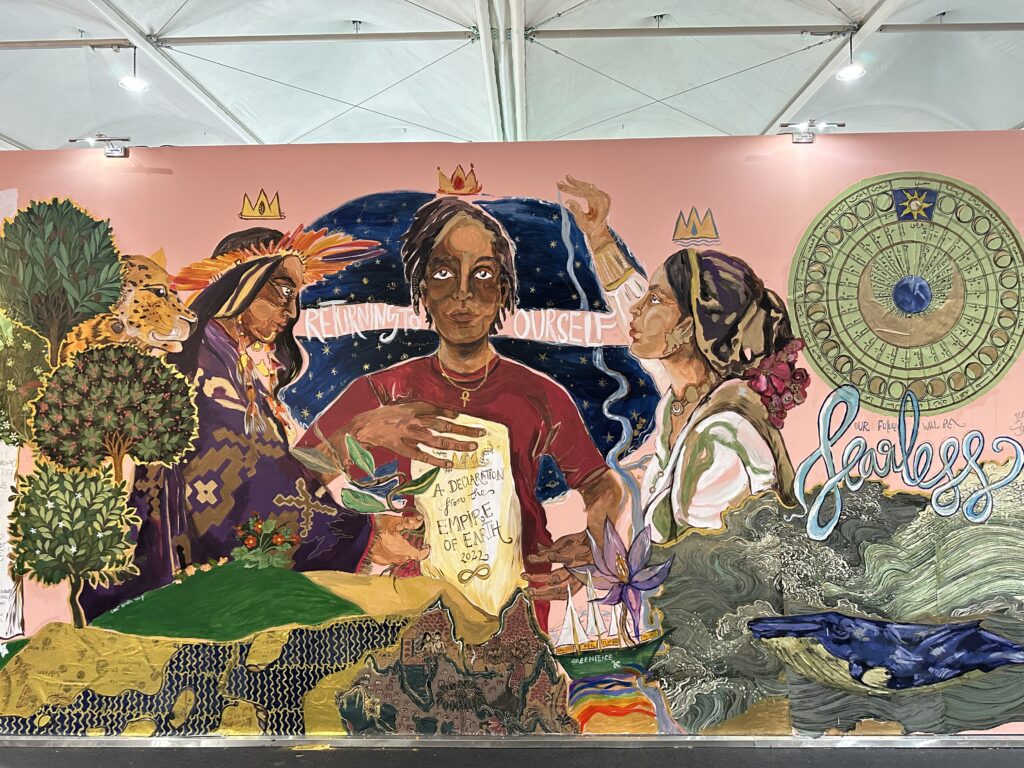

© Gayatri Ganju
As well as creative interventions on the ground, Rewriting Extinction worked to bring the ongoing developments of the COP27 to global audiences with a touch of humour, while keeping the messages around loss and damage front and centre on international news.
This year’s Culture COP showcased the broad range of ways in which cultural voices play a pivotal role in bringing attention to the impacts of the climate crisis. It also showed how cultural voices begin to imagine our collective future rooted in cultural heritage and centred on justice.
“Art is intrinsic to our culture—and conversations about our future should be carried out through an intersectional lens that extends to cultural preservation of art and language.” – Leo Cerda, Black Indigenous Liberation Movement.
Recommendations
What we’re listening to
-
Hali Hewa Podcast
“Hali ya Hewa” is a Swahili term for climate.
Through sharing real stories and experiences, this podcast aims to make the complexities of climate change relatable.
-
Black environmentalists… where you at?
With COP27in Egypt, De-Graft finds out why there are so few people from ethnic minorities working in the environment sector in the UK and hears about a scheme set up to change this.
What we’re attending
-
An Indigenous Rights Approach to Becoming Biodiversity Positive
When: Wed, 14 December – 1:30pm CET
Where: Online
Five Indigenous leaders will speak about their experiences with a conservation approach that supplements thousands of years of care over their territory lands and waters.
-
The Cop27 deal is historic but is it enough?
When: Tues, 6 December – 7:30pm CET
Where: Online
The agreement established a fund to compensate vulnerable countries for the irreparable climate damage they have suffered. But is it enough to repair the rapid climate change the planet is currently experiencing?
What we’re watching
-
Indigenous Food
Indigenous actor Dallas Goldtooth travelled to Minneapolis, Minnesota, to meet Sean Sherman, The Sioux Chef, one of many people fighting to put Indigenous food at the heart of people’s diets.
-
Un monde nouveau (1/3) – Résister
Faced with a future darkened by the climate crisis, director and environmental activist Cyril Dion travels the world to meet people who have revolutionised a region, a country or an activity, and sketches out a new narrative: that of a fairer and more ecological world (French content).


